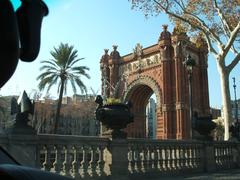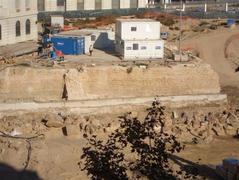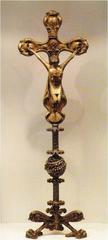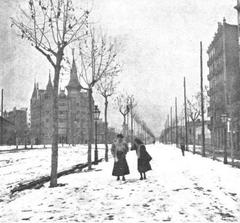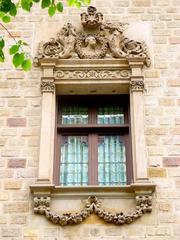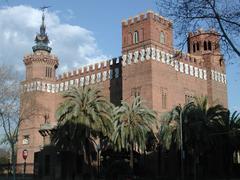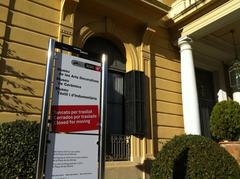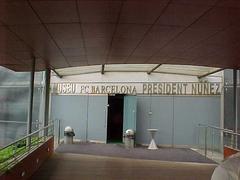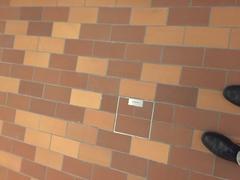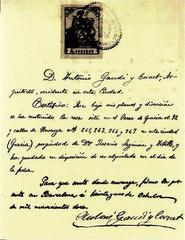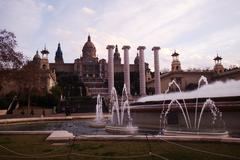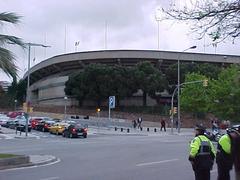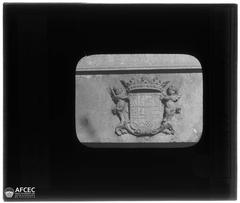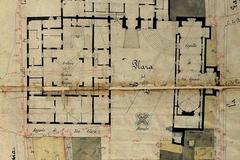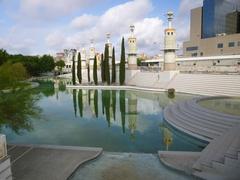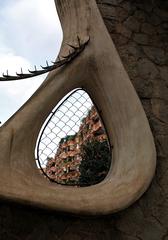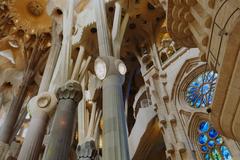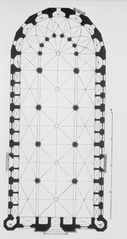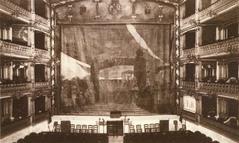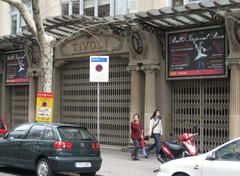Visiting Montjuïc Castle: History, Tickets, and Tips
Date: 16/07/2024
Introduction
Montjuïc Castle is an iconic historical monument perched atop Montjuïc Hill in Barcelona, Spain. This fortress, offering panoramic views of the city and the Mediterranean Sea, is not only a significant relic of military architecture but also a testament to Barcelona’s rich and tumultuous history. Originally constructed in the 17th century, Montjuïc Castle has witnessed a series of pivotal events, including the Catalan Revolt (Britannica) and the War of Spanish Succession (Britannica). Over the centuries, the castle transitioned from a military stronghold to a political prison, most notoriously during the Francoist era (Britannica). Today, it stands as a cultural landmark, hosting exhibitions and events that attract both locals and tourists. This comprehensive guide will explore the castle’s historical significance, provide practical visitor information, and offer tips for making the most of your visit.
Table of Contents
Historical Background
Early History and Construction
Montjuïc Castle, perched atop Montjuïc Hill in Barcelona, has a storied history that dates back to the 17th century. The initial fortification was constructed in 1640 during the Catalan Revolt against King Philip IV of Spain. This early structure was a rudimentary fortification, primarily built to defend the city from potential attacks. The strategic location of Montjuïc Hill, offering a panoramic view of the city and the Mediterranean Sea, made it an ideal site for a military stronghold.
In 1751, under the reign of Ferdinand VI, the castle underwent significant reconstruction and expansion. The new design, completed in 1779, was the work of military engineer Juan Martín Cermeño. The revamped structure featured a star-shaped layout, a common design for fortresses of that era, which provided enhanced defensive capabilities. The castle’s walls were reinforced, and additional bastions were added to improve its ability to withstand sieges.
Role in the War of Spanish Succession
Montjuïc Castle played a crucial role during the War of Spanish Succession (1701-1714). The conflict arose from a dispute over who should succeed Charles II of Spain, leading to a broader European war. Barcelona, a stronghold of the Habsburg supporters, faced a prolonged siege by Bourbon forces. In 1705, the castle was captured by the Habsburg-aligned forces, but it changed hands multiple times throughout the war. The Treaty of Utrecht in 1713 eventually ended the conflict, with the Bourbons emerging victorious. The castle’s strategic importance was underscored during this period, as it served both as a defensive bastion and a symbol of control over the city.
19th Century: Political Prison and Symbol of Repression
The 19th century saw Montjuïc Castle transition from a military fortress to a symbol of political repression. Following the defeat of Napoleon’s forces in Spain, the castle was used by the Spanish government to imprison political dissidents. During the turbulent years of the Carlist Wars (1833-1876), the castle’s role as a prison was further solidified. It housed numerous political prisoners, including supporters of the Carlist cause, who sought to establish an alternative branch of the Bourbon dynasty on the Spanish throne.
One of the most infamous episodes in the castle’s history occurred in 1896, following the bombing of the Corpus Christi procession in Barcelona. The Spanish authorities arrested and tortured hundreds of anarchists and labor activists, many of whom were imprisoned in Montjuïc Castle. The harsh treatment of these prisoners, known as the “Montjuïc Trials” (Britannica), drew international condemnation and highlighted the castle’s role as a tool of political repression.
20th Century: Civil War and Francoist Era
The 20th century brought further turmoil to Montjuïc Castle. During the Spanish Civil War (1936-1939), the castle was again used as a military stronghold and prison. Both Republican and Nationalist forces utilized the castle at different times, imprisoning and executing political opponents. One of the most notable figures executed at Montjuïc during this period was Lluís Companys, the President of Catalonia, who was captured by Nazi forces in France and handed over to Francoist Spain (Britannica). His execution in 1940 remains a poignant symbol of the castle’s dark history.
Under Francisco Franco’s dictatorship (1939-1975), Montjuïc Castle continued to serve as a military prison. It was a site of repression and punishment for those who opposed the regime. The castle’s use as a prison only ended in 1960, when it was transferred to the city of Barcelona and opened to the public as a military museum.
Modern Era: Restoration and Cultural Significance
In the latter half of the 20th century, Montjuïc Castle underwent a transformation from a symbol of repression to a cultural and historical landmark. In 1963, the castle was converted into a military museum, showcasing Spain’s military history and artifacts. However, the museum’s focus on military history was controversial, given the castle’s association with political repression.
In 2007, the Spanish government transferred ownership of Montjuïc Castle to the city of Barcelona. This transfer marked a new chapter in the castle’s history, as efforts were made to restore and repurpose the site. The military museum was closed, and the castle was opened to the public as a cultural and historical monument. Today, Montjuïc Castle hosts various cultural events, exhibitions, and activities, attracting both locals and tourists.
The castle’s transformation is part of a broader effort to reconcile with its complex past. It serves as a reminder of the city’s turbulent history, while also offering a space for reflection and education. The panoramic views from the castle, overlooking Barcelona and the Mediterranean, provide a stark contrast to its dark history, symbolizing the city’s resilience and renewal.
Visitor Information
Ticket Prices
Tickets for Montjuïc Castle can be purchased online or at the entrance. General admission is €5, while reduced rates are available for students and seniors. Admission is free on Sundays after 3 PM.
Opening Hours
Montjuïc Castle is open daily from 10 AM to 8 PM during the summer months (April to September) and from 10 AM to 6 PM during the winter months (October to March). It is closed on December 25th and January 1st.
Travel Tips
Visitors can reach Montjuïc Castle by taking the Montjuïc Cable Car from the Paral·lel metro station or by bus number 150. Walking or cycling up Montjuïc Hill is also an option for the more adventurous.
Nearby Attractions
While visiting Montjuïc Castle, consider exploring nearby attractions such as the Magic Fountain of Montjuïc, the National Art Museum of Catalonia, and the Joan Miró Foundation.
Accessibility
Montjuïc Castle is accessible to visitors with reduced mobility. Elevators and ramps are available, ensuring that everyone can enjoy the site.
Special Events
The castle hosts various cultural events throughout the year, including concerts, exhibitions, and reenactments. Check the official website for the latest schedule.
Guided Tours
Guided tours are available in multiple languages and provide a deeper understanding of the castle’s history and significance. Booking in advance is recommended.
Photographic Spots
Montjuïc Castle offers stunning views of Barcelona and the Mediterranean, making it a prime location for photography. The best spots include the battlements and the terrace.
FAQ
Q: What are the visiting hours for Montjuïc Castle? A: The castle is open daily from 10 AM to 8 PM in the summer and from 10 AM to 6 PM in the winter.
Q: How much are the tickets for Montjuïc Castle? A: General admission is €5, with reduced rates for students and seniors. Admission is free on Sundays after 3 PM.
Q: What is the best way to get to Montjuïc Castle? A: You can take the Montjuïc Cable Car from the Paral·lel metro station, bus number 150, or walk/cycle up Montjuïc Hill.
Q: Are there guided tours available? A: Yes, guided tours are available in multiple languages. It is recommended to book in advance.
Q: Is Montjuïc Castle accessible for visitors with reduced mobility? A: Yes, the castle has elevators and ramps to ensure accessibility for all visitors.
Conclusion
Montjuïc Castle stands as a testament to Barcelona’s rich and tumultuous history. From its origins as a military fortress to its current role as a cultural landmark, the castle offers a unique glimpse into the past while serving as a vibrant space for reflection and education. Whether you’re a history buff, a photography enthusiast, or simply looking to enjoy breathtaking views, Montjuïc Castle is a must-visit destination in Barcelona. For more detailed information and updates, visitors can refer to the official Montjuïc Castle website and explore related articles on Audiala.


